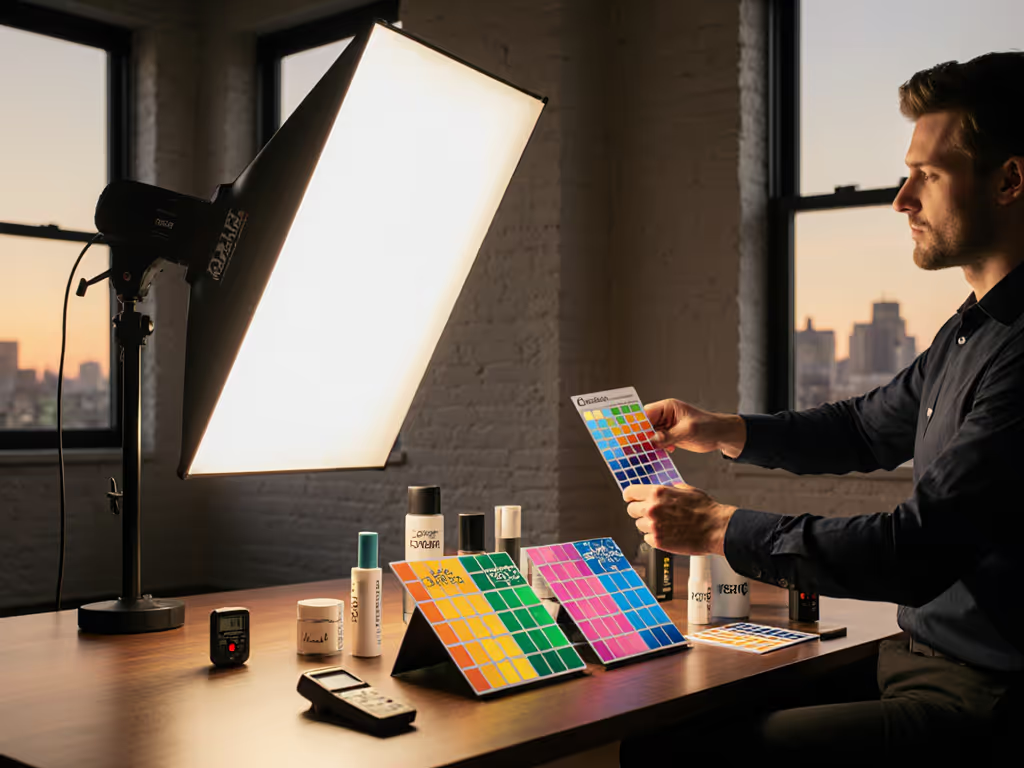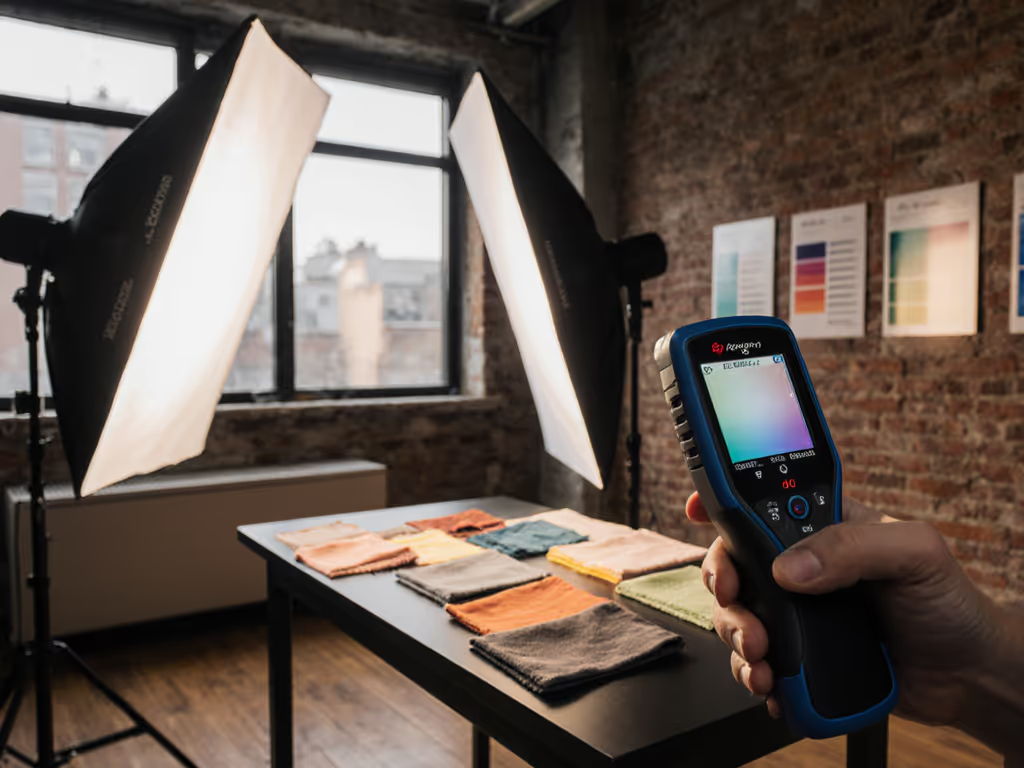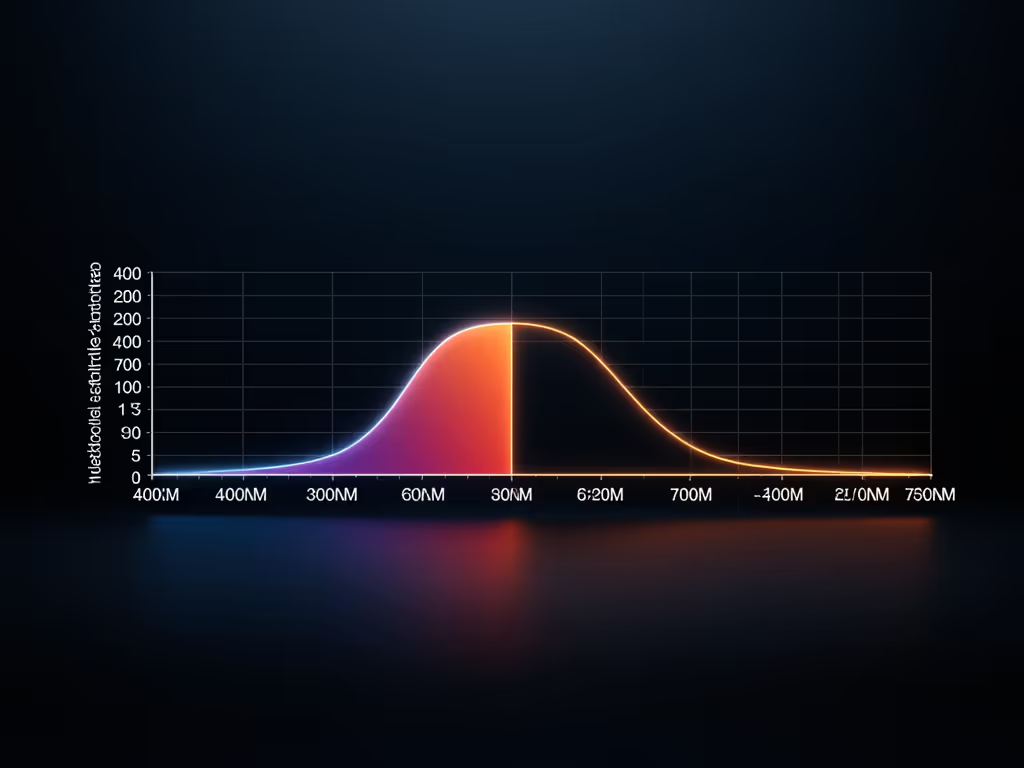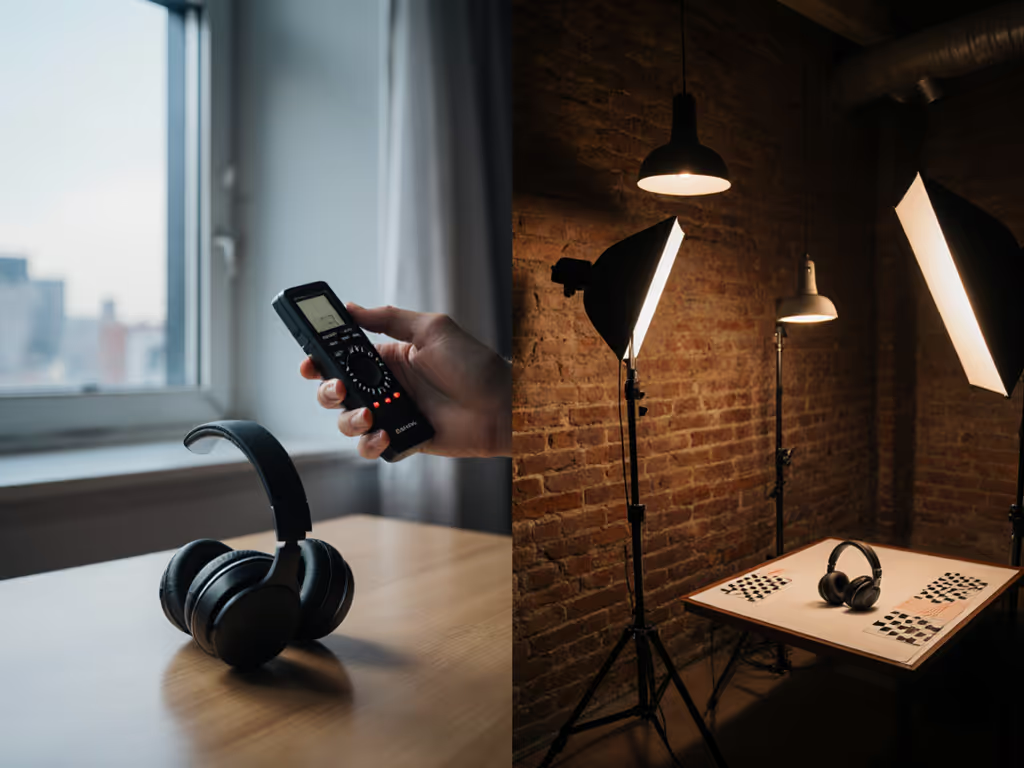Meeting Amazon photography requirements isn't just about pixel dimensions or pure white backgrounds - it's a spectral integrity challenge. eCommerce product lighting failures manifest as product returns, client distrust, and hours wasted in post-production color correction. When emerald fabric reads as gray on camera while shoppers see vibrant green, you're facing a spectral mismatch, not a "bad photo." This FAQ deep dive addresses the root causes through measurable physics, not aesthetic preferences. Skin tones are the north star; everything else orbits them.
Why Amazon's White Background Requirement Fails Under Poor Lighting
Amazon mandates pure white backgrounds (RGB 255,255,255) and 85% frame occupancy to standardize product presentation. Yet under spectrally deficient lighting, this creates catastrophic metamerism, where colors appear identical under one light source but mismatch under another. Consider two critical metrics:
- TM-30 Rf (Fidelity Index): Must exceed 90 for reliable color reproduction. Cheap LEDs often score 70-80, creating gaps in specific wavelengths (e.g., 620 nm red sensitivity).
- Rg (Gamut Index): Values below 95 cause desaturation; above 105 oversaturates warm tones, turning skin tones orange or gray.
In a recent client shoot, a hero dress appeared emerald to shoppers but rendered flat gray on camera due to a 620 nm SPD gap in mixed LEDs. No amount of white balance correction fixed it, because the light lacked 620 nm energy. The solution wasn't more light but spectrally complete light. match by spectrum, not rumor. For Amazon compliance, your lighting must:
- Cover 400-700 nm without gaps (verified via spectrometer)
- Maintain Rf ≥ 92 and Rg 97-103
- Deliver consistent CCT within ±50K across the scene
Skin tones first; everything else negotiates around them.
How Do I Prevent Color Shifts in Real-World Spaces with Mixed Lighting?
Real rooms contain contaminating sources: tungsten bulbs (2700K, high CRI but heavy red spill), daylight (5600K, variable SPD), and RGB fixtures (spiky, discontinuous spectra). These cause green/magenta shifts across shots, a critical failure for product variation photography. The fix requires spectral diagnostics, not guesswork:
Step 1: Diagnose Spectral Gaps
Use a handheld spectrometer to measure SPDs at the product plane. Target metrics:
| Light Source | Typical Rf | Critical Gaps | Amazon Compliance Risk |
|---|
| Cheap LED | 72-80 | 620 nm (red) | High (product color shift) |
| Full-Spectrum LED | 95+ | None | Low |
| Tungsten | 99-100 | 450 nm (blue) | Medium (blue spill) |
Step 2: Control Spill in Low Ceilings
In 8-9 ft spaces, use:
- Grids (40°-60°): Reduce spill by 70% without bulky flags
- Book lights: Create soft wrap-around light in <1m depth
- Negative fill: Foam-core bounce cards at -30° to absorb stray light
Step 3: Power Management
On 15A/120V circuits (common in apartments):
- Limit continuous draw to 12A (1440W) for safety
- Use lights with constant current drivers (flicker-free at 1/125s shutter)
- Prioritize 90+ CRI LEDs with 0% PWM (audible fan noise indicates overload)
Can I Fix Skin Tones and Product Colors in Post-Production?
Rarely, and never reliably for Amazon listings. Post-production corrects RGB values, not spectral deficiencies. If your light source lacks 620 nm energy (as in the boutique example), no grade can reconstruct absent data. You'll see:
- Skin tones with Rf < 85: Unnatural magenta/green casts resistant to correction
- Product colors with Rg < 95: Desaturated hues requiring saturation boosts that clip highlights
Instead, build lighting product photography workflows around in-camera spectral accuracy:
- Meter-based exposure: Target 18% gray card at f/5.6, ISO 400, 1/125s
- Custom camera profiles: Shoot X-Rite ColorChecker under your specific lighting, then generate profiles via Capture One or Lightroom
- SPD validation: Verify TM-30 Rf/Rg before shooting. Don't trust CRI alone
This approach ensures brand-consistent color across stills/video and reduces grading time by 60-75%, a fact confirmed by recent shoots for three DTC apparel brands. For white background lighting, remember: neutral white requires balanced SPDs. If your background reflects 550 nm spikes (common in low-CRI LEDs), it will contaminate adjacent product colors through optical bounce.
How Do I Achieve Consistent Results Across Locations?
Brand consistency demands spectral repeatability. Document these metrics for every setup:
- SPD signatures: Save spectrometer readings per location
- Exposure targets: Gray card luminance (lux) at product plane
- Distance/angle ratios: e.g., "Key light 1.2m at 45°, fill light 0.8m at 135°"
When shooting in a new hotel room, replicate key metrics, not just "use two lights." For marketplace image standards, Amazon's 2000x2000px requirement is meaningless if SPDs vary between photos. One DTC beauty brand reduced client color complaints by 89% after enforcing Rf ≥ 93 across all shoot locations.
Conclusion: The Spectral Foundation for Brand Trust
eCommerce product lighting that meets Amazon photography requirements must transcend basic guidelines. It requires spectral diligence, verifying SPD continuity, TM-30 scores, and consistent exposure targets. This isn't pixel pushing; it's physics. For gear that meets these standards, see our best eCommerce lighting kits. When skin tones stay honest and product colors resist metameric failure, you eliminate returns, build trust, and create a visual signature that travels across locations. Stop chasing RGB approximations. Start measuring photons.
Skin tones first; everything else negotiates around them.
Further Exploration: Dive into IES TM-30-20 methodology for rigorous spectral analysis. Study how SPD gaps correlate to specific hue shifts in CIE 1976 color space. Your camera's histogram won't show the truth, but a spectrometer will.




